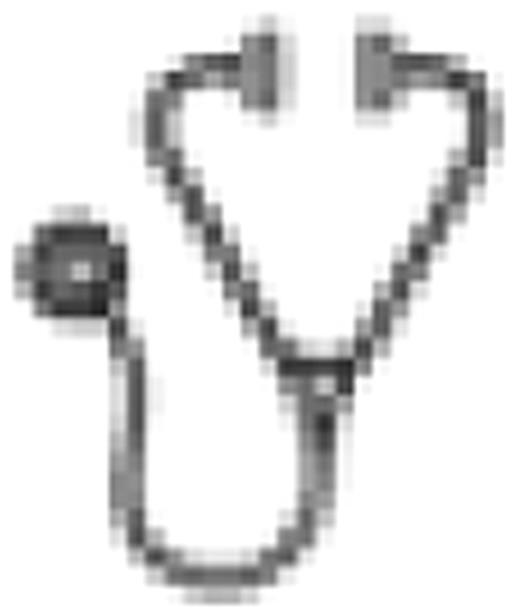Abstract
Abstract 525
Role and timing of allografting in myeloma are hotly debated. Before the introduction of new drugs, we carried out a trial where the treatment assignment was based only on the presence/absence of an HLA-identical sibling (Bruno et al, N Engl J Med 2007).
Overall, 162/199 (81%) of patients with at least one sibling were HLA-typed. First-line treatments included induction with VAD-based regimens and a cytoreductive autograft, followed by a nonmyeloablative allograft (Tandem auto-allo) or a second melphalan-based autograft (Double-auto). We now report an update at a median follow up of 7.1 years.
Response rates [complete (CR) and partial remissions (PR)] at the time and after the non-myeloablative allograft and at the time and after the second autograft did not differ between the two cohorts: 76% and 86%, and 76% and 91% respectively (p=1 and p=0,54). However, CR rate was significantly higher after the non-myeloablative allograft than after the second autograft: 55% versus 26% (p=0,0026). At a median follow up of 7.1 years (range 2.5 – 10.7+), by intention-to-treat analysis, median overall survival (OS) and event free survival (EFS) were significantly longer in patients with HLA-identical siblings (No.80) as compared with those without (No.82): not reached vs. 4.25 years (HR 0.51, CI 95% 0.34–0.76, p=0.001) and 2.8 vs. 2.4 years (HR 0.62, CI 95% 0.44–0.87, p=0.005). By multivariate analysis, independent of age, gender, myeloma protein isotype, Durie&Salmon stage, and disease status at the first autograft; the presence of an HLA-identical sibling was significantly associated with longer OS (HR 0.5, CI 95% 0.3–0.8, p=0.001) and EFS (HR 0.63, CI 95% 0.4–0.9, p=0.01). At a median follow up of 7.3 (range 5.4 – 10.7+ years), median OS was not reached in the 58 patients who received a non-myeloablative allograft and 5.3 years in the 46 who received a second high-dose melphalan autograft (HR 0.55, CI 95% 0.32–0.94, p=0.02), whereas EFS was 39 months and 33 months (HR 0.62, CI 95% 0.40–0.96, p=0.02) respectively. Cumulative incidence of transplant related mortality was 11% and 2% at 2 years respectively. At median follow-ups of 7.3 years from diagnosis (range 5.4 – 10.4+) and 6.5 years from the allograft (range 4.2 – 9.4+), and 7.4 years from diagnosis (range 5.6 – 10.7+) and 6.2 years from the second autograft (range 4.7 – 9.1+), 30/58 (52%) and 37/46 (80%) patients, respectively, were treated for disease relapse/progression. Salvage therapies included bortezomib- or thalidomide-containing regimens in most patients of both cohorts. After 1–3 lines of therapy, 22/30 (73%) had a response, including 5 CR and 17 PR, in the tandem auto-allo group, whereas 21/37 (54%) had a response, including 4 CR and 16 PR after the second autograft. Of note, at a median follow up of 3.9 years from the start of the first salvage therapy, OS was not reached and was 1.7 years in patients who had relapsed/progressed after the allograft and the second high-dose melphalan (HR 0.44, CI 95% 0.24–0.82, p=0.01) respectively.
In this study, allografting conferred a long term survival advantage over standard autografting. Salvage therapy was associated with longer OS perhaps due to a synergistic effect between new drugs and residual graft-vs.-myeloma effects. In prospective clinical trials, the combination of graft-vs.-myeloma effects with “new drugs” should be explored and may increase the cure rate of myeloma patients.
Bringhen:Celgene: Honoraria; Janssen-Cilag: Honoraria. Palumbo:Celgene: Honoraria, Membership on an entity's Board of Directors or advisory committees; Janssen-Cilag: Honoraria, Membership on an entity's Board of Directors or advisory committees. Boccadoro:Celgene: Consultancy, Membership on an entity's Board of Directors or advisory committees, Research Funding; Janssen-Cilag: Consultancy, Membership on an entity's Board of Directors or advisory committees, Research Funding.

This icon denotes an abstract that is clinically relevant.
Author notes
Asterisk with author names denotes non-ASH members.

This feature is available to Subscribers Only
Sign In or Create an Account Close Modal